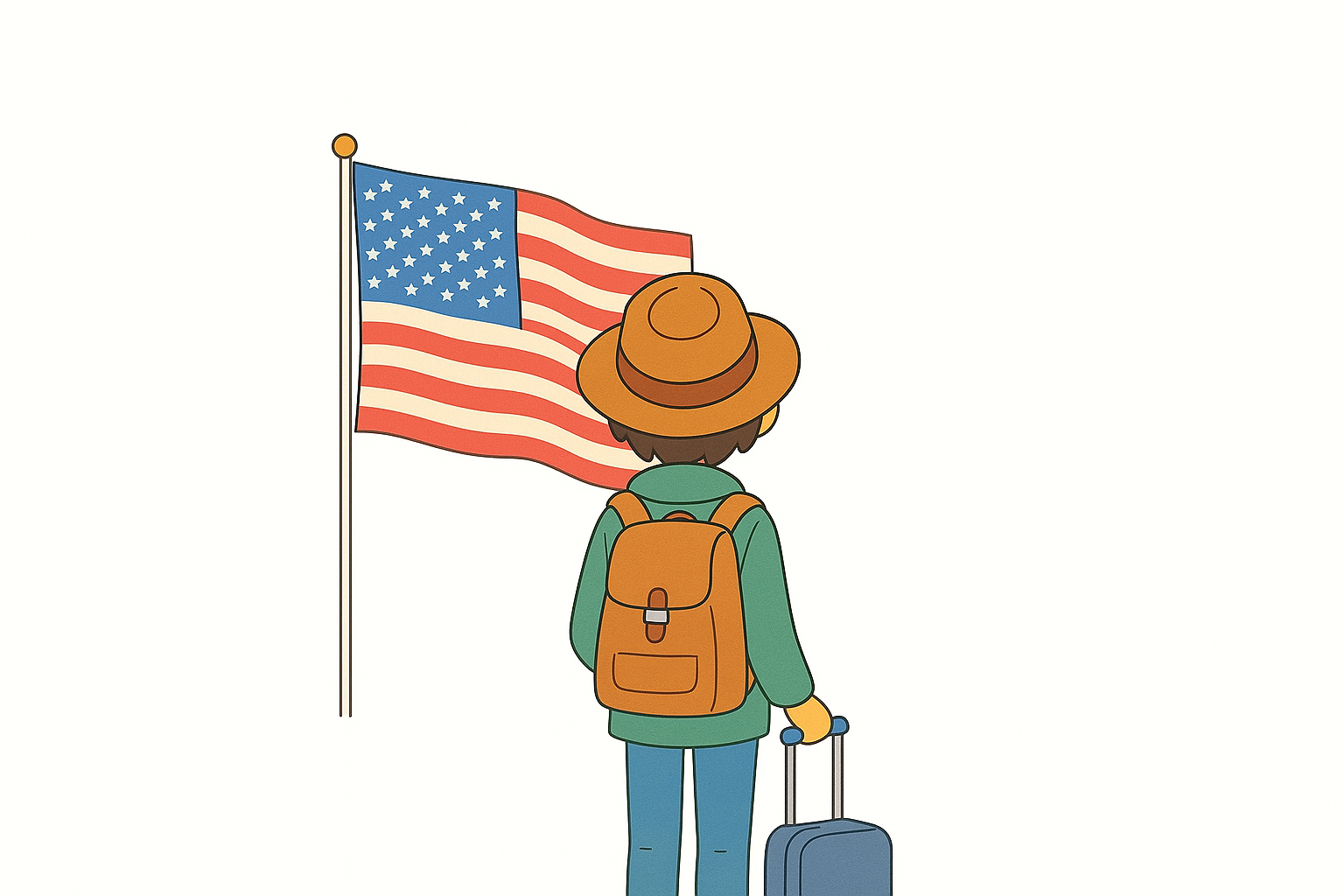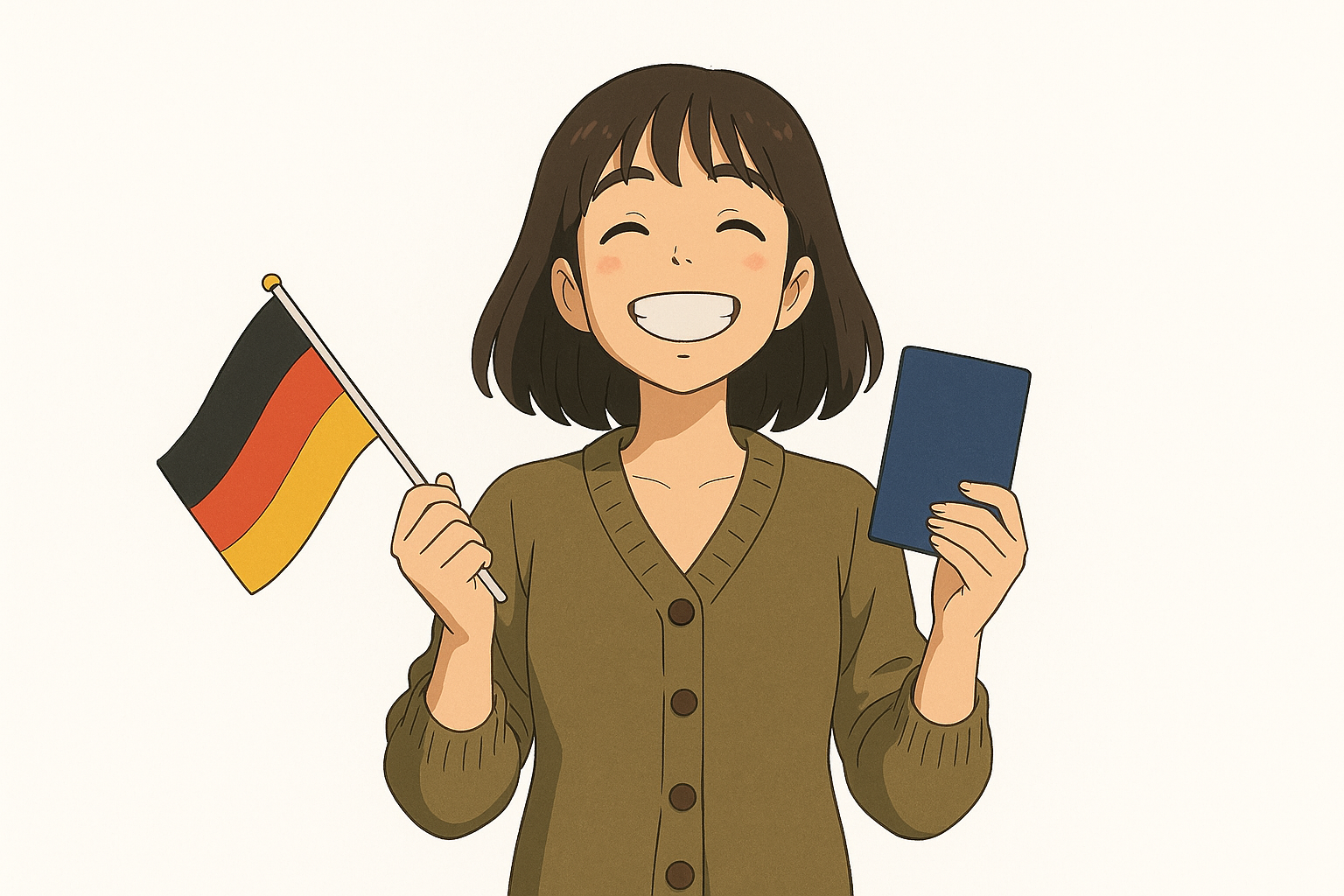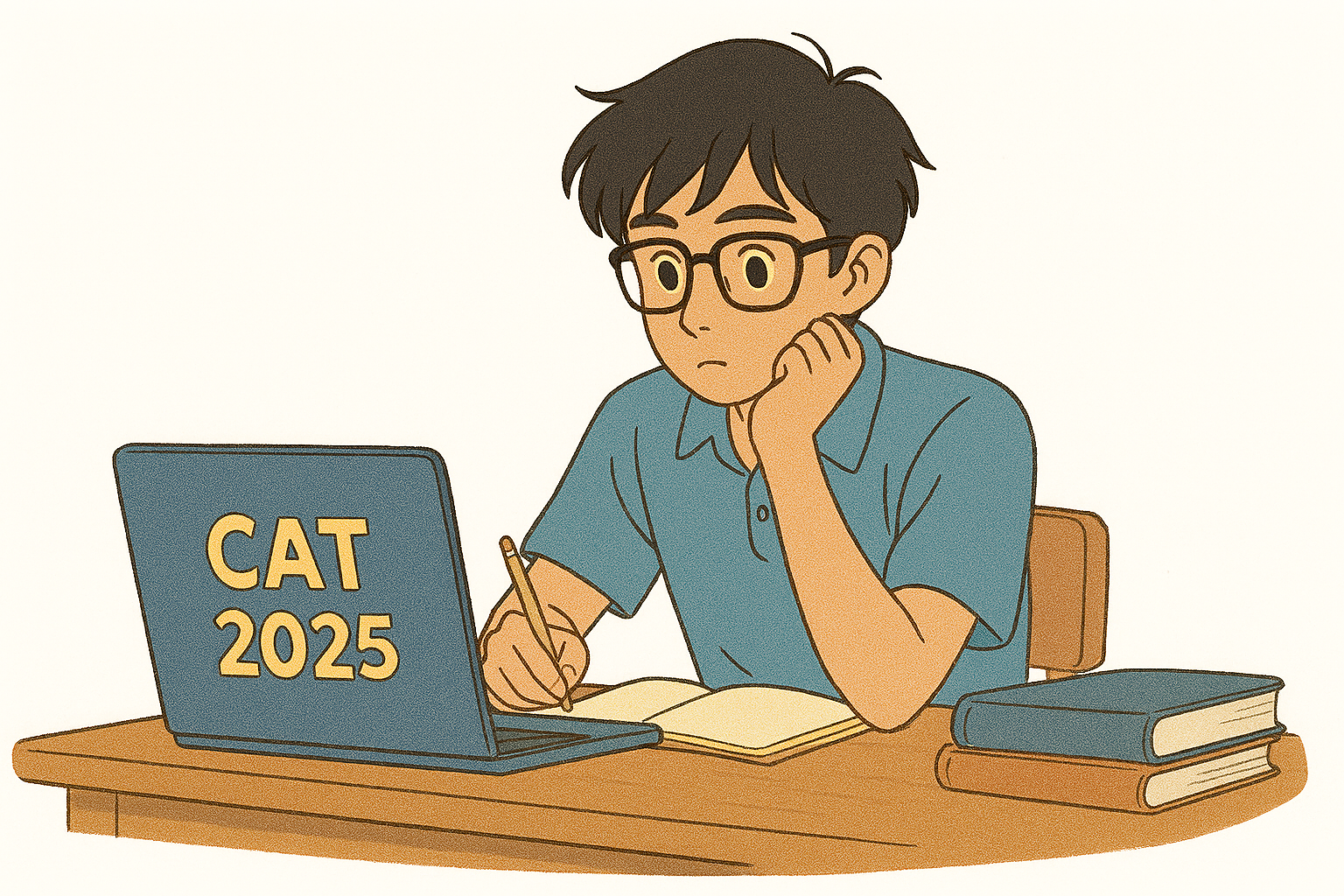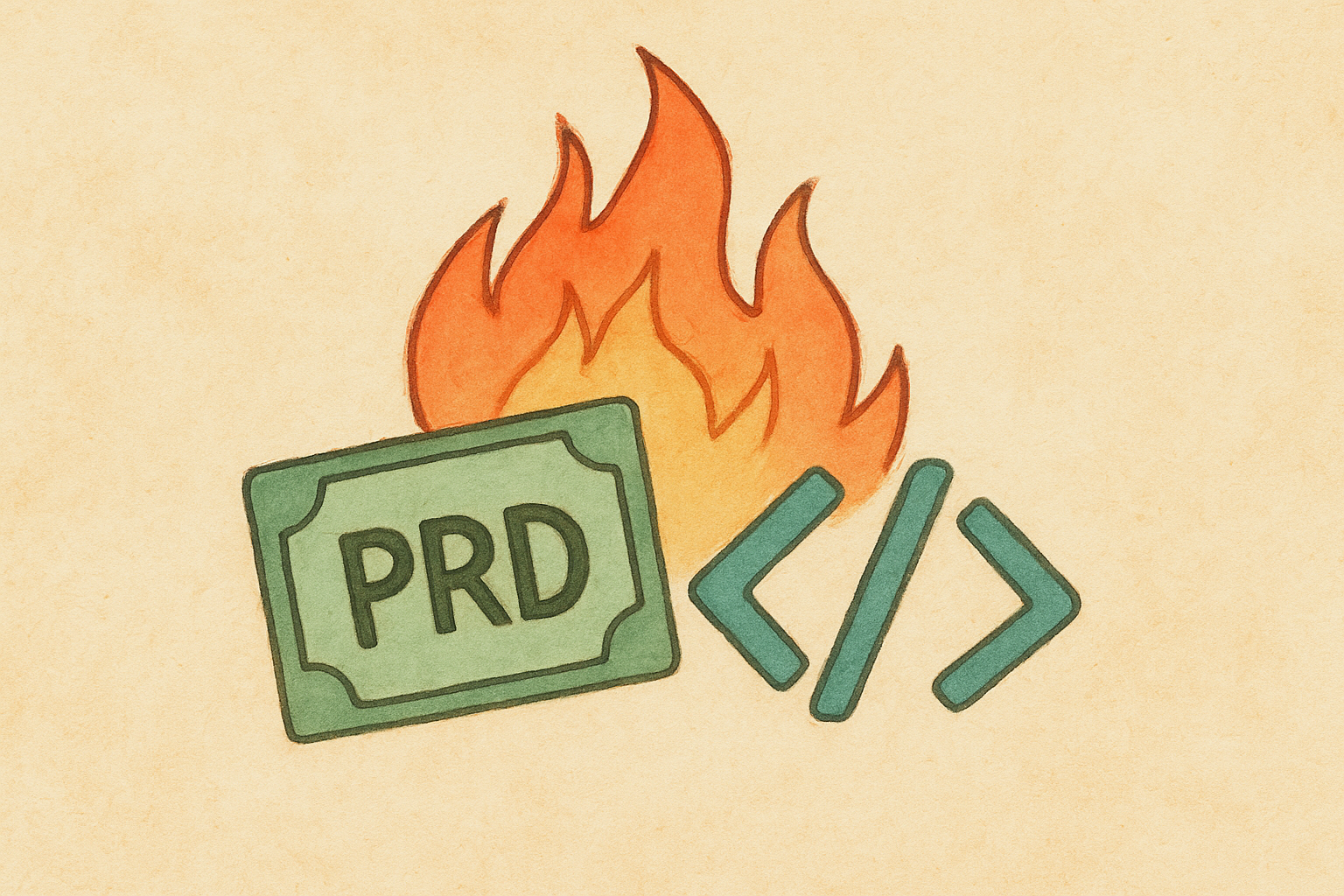All blogs · Written by Rahul
US B1/B2 Visa Interview - Practice with AI Mock Interviews

Preparing for a B1/B2 visa interview? In this blog, we are presenting a complete guide on how you can use our AI mock interview and deeply researched guidance presented here to dramatically increase your chances of success.
Why US Visa Interviews Are Critical
Unlike many other countries’ visa processes that rely heavily on documentation, US consular officers make decisions based on brief, focused interviews:
- Quick Decision Making: Most interviews last only 3-5 minutes
- First Impression Matters: Officers decide within the first minute
- Document + Interview Combination: Both must align perfectly
- High Stakes: One poor answer can result in rejection
- No Second Chances: Each answer must be precise and credible
Understanding this high-pressure environment is crucial for your preparation strategy.
The Legal Reality: Understanding INA Section 214(b)
Before diving into preparation, you must understand the fundamental legal challenge: Section 214(b) of the Immigration and Nationality Act creates a legal presumption that every B1/B2 applicant is an “intending immigrant” until proven otherwise.
This isn’t a casual assumption—it’s a legal mandate requiring you to actively and affirmatively demonstrate your temporary intent. The burden of proof rests entirely on you to overcome this legal barrier.
What this means in practice:
- You must prove you will return home after your visit
- Documents alone won’t save you—your interview performance is crucial
- The consular officer needs confidence in your credibility and intent
- Weak ties to your home country are the #1 reason for visa denial
AI-Powered Interview Practice: Your Secret Weapon
Practice with Realistic Consular Officer Simulation →
Experience the real interview environment before it matters:
- Authentic embassy questioning - Mirrors actual consular officer style and approach
- Legal framework focus - Tests your ability to overcome the 214(b) presumption
- Strategic pressure testing - Identifies weak points in your narrative before the real interview
- Immediate feedback - Spots dangerous answers and inconsistencies that cause denials
- Unlimited practice - Keep refining until your responses are bulletproof
Understanding B1/B2 Visa Categories and Restrictions
B-1 (Business): Permitted activities include meetings, conferences, negotiations, settling an estate, and consulting with business associates. Critical restriction: No paid work or salary from U.S. sources.
B-2 (Tourism): Covers vacation, visiting family, medical treatment, and short non-credit educational programs.
What’s NOT allowed: Work for pay, degree-seeking study, paid performances, or any form of immigration.
Strategic Question Categories: What Officers Really Want to Know
Consular officers use systematic questioning to evaluate your case against the 214(b) presumption. Each question serves a specific legal purpose:
1. Trip Purpose & Logistics
Officer’s Goal: Verify legitimate temporary purpose matching B1/B2 activities
- ”What is the purpose of your visit?"
- "How long will you stay? What are your exact dates?"
- "Where will you stay? Who are you visiting?"
- "What specific activities will you do?”
Strategic Response: Be precise and detailed. Instead of “sightseeing,” say “visiting New York’s Metropolitan Museum, Broadway shows, and Statue of Liberty for 10 days.”
2. Financial Capacity Assessment
Officer’s Goal: Ensure you can afford the trip without illegal employment
- ”How much will your trip cost?"
- "Who is paying for your expenses?"
- "What is your monthly salary?"
- "Can you show me your bank statements?”
Strategic Response: Have exact figures ready. Show financial proportionality—your trip cost should be reasonable relative to your income.
3. Home Country Ties Evaluation
Officer’s Goal: Assess the strength of factors compelling your return (overcoming 214(b))
- “What do you do for work? How long have you been employed?"
- "Do you own property or have significant assets?"
- "What family responsibilities do you have?"
- "What happens to your job while you’re away?”
Strategic Response: Emphasize multiple strong ties. Don’t rely on just employment—mention property, family dependents, ongoing business commitments.
4. Immigration Intent Probes
Officer’s Goal: Detect any intention to remain permanently or work illegally
- ”Do you have relatives in the U.S.? What is their status?"
- "Have you ever applied for immigration benefits?"
- "Why don’t you want to live in America permanently?”
Strategic Response: Be honest about U.S. relatives but emphasize your temporary visit purpose and strong commitment to your home country.
5. Credibility and Consistency Checks
Officer’s Goal: Verify truthfulness and detect inconsistencies
- ”Have you traveled internationally before? Where?"
- "Have you been to the U.S. before?"
- "Tell me about your previous visa applications.”
Strategic Response: Be consistent with your DS-160 form. If you’ve had previous denials, be prepared to explain what has fundamentally changed.
Dressing for Success: First Impressions Matter
Your appearance speaks before you do, and at a visa interview, first impressions carry significant weight. Consular officers see hundreds of applicants daily, and professional appearance immediately signals seriousness and respect for the process.
Think of your visa interview as a job interview for temporary entry to the United States. Business formal or smart casual attire works best:
| Category | Men | Women |
|---|---|---|
| Clothing | • Dress shirts with ties • Formal pants (no jeans) | • Professional blouses with formal pants or skirts • Well-fitted business dresses |
| Footwear | • Closed-toe dress shoes | • Conservative footwear |
| Accessories | • Minimal accessories | • Tasteful, minimal jewelry |
Color Guidelines:
- Stick with classic colors: navy, black, gray, or white
- Convey professionalism without distracting from your message
- Avoid bright colors, flashy patterns, or casual wear
What to Avoid:
- Excessive jewelry or strong fragrances
- Clothing with political or religious messages
- Anything that creates distractions from your qualifications
Remember, you want the officer focused on your qualifications, not your appearance choices.
Crafting Perfect Answers: The 15-30 Second Rule
Here’s a proven framework for answering visa interview questions effectively:
- 1. Direct Answer (5 seconds): Start with the exact answer to the question asked.
- 2. Supporting Detail (10 seconds): Add one specific, relevant detail.
- 3. Full Stop (15-30 seconds total): Stop talking. Resist the urge to elaborate.
Sample Answer Templates
Let’s look at how to apply this framework to common questions:
Question: “What is the purpose of your visit?”
❌ Wrong Answer (Too vague): “I want to do some sightseeing and maybe visit some friends…”
✅ Perfect Answer: “Tourism for 14 days. I plan to visit New York’s museums, Broadway shows, and Niagara Falls, then spend three days in Washington D.C. visiting the Smithsonian.”
Question: “How will you fund this trip?”
❌ Wrong Answer (Unclear): “I have enough money saved up and my job pays well…”
✅ Perfect Answer: “Using my personal savings of $8,000. I earn $65,000 annually as a software engineer at TechCorp, and have bank statements showing consistent savings for the past six months.”
Question: “Why will you return to your home country?”
❌ Wrong Answer (Weak ties): “Because I live there and have my life there…”
✅ Perfect Answer: “I must return to my position as Senior Manager at ABC Company where I manage a team of 12 people. Additionally, I’m purchasing a new apartment with a $50,000 down payment due in March.”
Question: “Have you been to the US before?”
❌ Wrong Answer (If first time - uncertain): “No, but I’ve always wanted to visit and I’ve heard great things…”
✅ Perfect Answer: “No, this is my first time. I’ve traveled to Canada, UK, and Singapore previously and returned on schedule each time, as shown in my passport stamps.”
Common Mistakes and How to Avoid Them
1. The Vague Purpose Trap
Mistake: “I want to see America and do some tourism…” Fix: Be specific about destinations, activities, and duration
2. The Weak Financial Story
Mistake: “I have enough money for the trip…” Fix: State exact amounts, sources, and supporting documentation
3. The Immigration Intent Red Flag
Mistake: “I might look for opportunities while I’m there…” Fix: Always emphasize temporary visit and definite return plans
4. The Rambling Response
Mistake: Talking for minutes without clear structure Fix: Use the 15-30 second framework religiously
5. The Inconsistent Information
Mistake: Answers that don’t match DS-160 or documents Fix: Review all materials thoroughly before interview
Most Common Rejection Reasons and How to Avoid Them
Knowledge of common rejection reasons helps you strengthen your application proactively. Understanding these pitfalls allows you to address potential weaknesses before your interview.
1. Insufficient Home Country Ties (Most Common - Section 214(b)) This is the leading cause of B1/B2 visa denials. Officers need confidence you’ll return after your visit.
How to avoid: Provide strong evidence of local commitments like stable employment, property ownership, family responsibilities, or ongoing business ventures. Show multiple ties rather than relying on just one factor.
2. Inadequate Financial Proof Your documentation must clearly demonstrate you can afford the entire trip without seeking employment in the US.
How to avoid: Include multiple types of financial evidence - bank statements, salary certificates, tax returns, and asset documentation. Show consistent income patterns and sufficient savings for your planned expenses.
3. Inconsistent Information Discrepancies between your DS-160, documents, and interview responses create credibility concerns.
How to avoid: Review all materials carefully before submission. Ensure dates, employment details, and travel plans align perfectly across all documents and your verbal responses.
4. Unclear Travel Purpose Vague or suspicious travel reasons raise red flags about your true intentions.
How to avoid: Be specific about your plans. Business travelers should have detailed meeting schedules, while tourists need realistic, well-researched itineraries with confirmed bookings.
5. Previous Visa Violations History of overstaying visas or violating terms severely impacts future applications.
How to avoid: Be completely honest about previous travel. If you have a violation history, demonstrate what has changed to ensure future compliance.
Your Preparation Checklist
Must-Know Information at Your Fingertips
| Information Type | Specific Details Required | Why It Matters |
|---|---|---|
| Trip Purpose | Exact activities, destinations, duration | Officers need specificity, not vague “tourism” |
| Travel Details | Hotel names, addresses, flight details | Shows genuine planning and temporary intent |
| Financial Facts | Total budget, monthly salary, bank balance | Proves ability to fund trip legally |
| Employment Info | Position, salary, leave approval, return date | Demonstrates strong professional ties |
| Property/Assets | Home ownership, investments, property value | Shows financial ties to home country |
| Family Ties | Dependents, commitments, responsibilities | Proves compelling reasons to return |
| Travel History | Previous countries, dates, compliance record | Establishes pattern of respecting visa terms |
Complete Document Checklist
Mandatory Documents (Must Bring):
| Document | Requirement | Notes |
|---|---|---|
| ✅ Valid passport | 6+ months validity beyond stay | Bring previous US passports if applicable |
| ✅ DS-160 confirmation | Printed barcode page | Must match interview answers exactly |
| ✅ Appointment confirmation | Interview letter | Shows date, time, location |
| ✅ MRV fee receipt | $185 application fee | Required at most consulates |
| ✅ Photograph | 2”x2”, taken within 6 months | US visa photo specifications |
Supporting Documents by Category:
| Category | Essential Documents | Optional but Helpful |
|---|---|---|
| Financial Proof | • Bank statements (3-6 months) • Salary certificates (last 3 months) • Income tax returns (2 years) | • Property deeds • Investment portfolio • Fixed deposits |
| Employment/Business | • Employment letter with leave approval • Company position verification | • Business registration (self-employed) • Ongoing project evidence |
| Travel & Purpose | • Detailed travel itinerary • Hotel reservations | • Conference registration (B1) • Return flight bookings |
| Family & Social Ties | • Marriage certificate • Children’s school records • Dependent documentation | • Previous international passports • Family commitment proof |
| Special Cases | Medical: Doctor diagnosis + US treatment plan + cost estimates Relatives: Their US status documents Previous Denials: New circumstances proof | Business: Meeting letters Tourism: Activity bookings |
Answer Preparation Worksheet
Step 1: Fill in Your Details
Travel Information:
- Purpose: _____________
- Duration: _____ days
- Dates: _____ to _____
- Cities: _____________
- Activities: _____________
Financial Details:
- Total budget: $_______
- Monthly salary: $_______
- Bank balance: $_______
- Funding source: _____________
Home Country Ties:
- Job title: _____________
- Company: _____________
- Property: _____________
- Family: _____________
Step 2: Build Your 30-Second Purpose Story
Master this 5-sentence framework:
- Why are you going? “I am traveling for [specific purpose] to [specific activities/meetings].”
- Where/with whom? “I will visit [specific cities] and stay at [hotel/family member].”
- How long? “For exactly [X] days from [date] to [date].”
- Who pays? “I am funding this trip with my personal savings of $[amount] from my position as [job title].”
- What do you return to? “I must return to my job at [company] where I [specific responsibilities] and my [family/property commitments].”
Critical Answer Templates:
Purpose (Detailed): “Tourism for 12 days. I will visit New York’s Metropolitan Museum, attend two Broadway shows, and spend three days in Washington D.C. visiting the Smithsonian Museums.”
Financial (Specific): “Using $8,000 from my personal savings. I earn $65,000 annually as Senior Software Engineer at TechCorp, with bank statements showing consistent savings over 18 months.”
Ties (Multiple): “I must return to manage my team of 8 developers at TechCorp, complete the purchase of my apartment with a $50,000 down payment due in March, and care for my elderly mother who depends on me financially.”
U.S. Relatives (Honest): “Yes, my brother is a U.S. citizen living in Chicago. However, I am not visiting him - I am touring New York and Washington D.C. independently as a tourist.”
Common Question Variations
They Ask The Same Thing Different Ways:
About Purpose:
- “Why are you going to the US?"
- "What will you do there?"
- "What’s your travel plan?"
- "Business or pleasure?”
Your Answer Stays Consistent: Specific purpose + activities
About Money:
- “Who’s paying for this?"
- "How much will you spend?"
- "Can you afford this trip?"
- "Show me your financial proof”
Your Answer Always: Source + amount + proof
Your Action Plan
If Your Interview is in 4+ Weeks:
- Start with the coach for comprehensive preparation
- Spend 2 weeks building foundation knowledge
- Test weekly with consular officer simulation
- Refine answers based on feedback
If Your Interview is in 2-3 Weeks:
- Intensive coach sessions daily
- Focus on weak areas identified
- Consular officer simulation every other day
- Prioritize critical question categories
If Your Interview is Next Week:
- Quick coach assessment
- Focus only on must-know information
- Daily consular officer simulations
- Perfect your key 5 answers
Special Circumstances: High-Risk Scenarios
Having Relatives in the United States
Risk: Officers may suspect immigrant intent if you have close family members in the U.S., especially citizens or permanent residents.
Strategy:
- Be completely truthful about relatives
- Emphasize your temporary visit purpose
- Strengthen evidence of your home country ties
- If not visiting them, clearly state this fact
Medical Treatment (B-2)
Higher documentation burden required:
- Local physician’s diagnosis explaining why U.S. treatment is necessary
- U.S. medical facility’s treatment plan and detailed cost projection
- Proof of ability to pay all medical and living expenses
- Clear timeline for treatment completion and departure
Business Travel (B-1)
Key requirements:
- Letter from foreign employer detailing position, salary, and business purpose
- Confirmation that salary continues from non-U.S. source
- Specific meeting schedules and business objectives
- No compensation from U.S. sources
Understanding Possible Outcomes
Approval
- Visa stamp placed in passport
- Important: Visa ≠ guaranteed entry; CBP officers at airport make final admission decision
- Multiple-entry visas typically valid for 10 years
Administrative Processing (221(g))
- Not a denial - requires additional documents or security clearance
- You’ll receive written instructions on what’s needed
- Processing can take weeks to months
- Wait at least 180 days before inquiring unless emergency
Denial (214(b))
- Most common reason: Insufficient home country ties
- No appeal process exists
- Can reapply when circumstances fundamentally change
- Don’t reapply immediately - wait 6-12 months for substantial changes
Fraud/Misrepresentation (212(a)(6)(C)(i))
- Permanent ineligibility for providing false information or documents
- Extremely difficult to overcome
- Never worth the risk
Practice with AI Mock Interview
Ready to practice? Test your preparation with realistic scenarios:
US Consular Officer B1/B2 Interview Simulation - Experience authentic embassy questioning and pressure-test your responses
Frequently Asked Questions
How long does the B1/B2 visa interview take? Most interviews last 3-5 minutes, though complex cases may take longer. The key is providing clear, direct answers that address the officer’s concerns efficiently.
Can I reschedule my visa interview appointment? Yes, but rescheduling policies vary by embassy. Most allow rescheduling online, though frequent changes may delay your application processing.
What happens if my B1/B2 visa is denied? You’ll receive a written explanation of the denial reason. You can reapply when circumstances genuinely change, but wait 6-12 months for substantial improvements to your case.
How early should I apply for my B1/B2 visa? Apply 2-3 months before your intended travel date. This allows time for interview scheduling, processing, and any additional documentation requests.
Do I need travel insurance for my B1/B2 visa application? Travel insurance isn’t required for the visa application, but it’s highly recommended for your actual trip to cover potential medical expenses in the US.
What is the current B1/B2 visa application fee? The MRV (machine-readable visa) fee is $185. Some nationalities also pay a reciprocity (issuance) fee after approval—check your country’s specific requirements.
Can I work in the US on a B1/B2 visa? No. B1/B2 visas strictly prohibit any form of employment or compensation from US sources. Violating this can result in deportation and future visa ineligibility.
Additional Resources & Official Links
To make your preparation easier, here are trusted official resources:
- Official DS-160 Form – Complete and submit your application: DS-160 Online Application
- U.S. Visa Appointment System – Schedule or reschedule your interview: U.S. Travel Docs
- U.S. Department of State B1/B2 Information: Official Visitor Visa Overview
- Visa Wait Times: Current Processing Times
- Visa Fees Information: Official Fee Structure
Strategic Reapplication: If You’ve Been Denied
Critical insight: Simply changing minor details (travel dates, hotel) won’t improve approval chances. Officers denied your case because you didn’t overcome the 214(b) presumption.
Before reapplying, ask yourself:
- What fundamental circumstances have changed since my denial?
- Do I have stronger ties to my home country now?
- Can I provide more compelling evidence of my temporary intent?
The most important interview question will be: “What has changed since your last application?” Your answer must demonstrate substantial improvement in your circumstances.
Final Strategic Recommendations
Success in obtaining a B1/B2 visa requires understanding that this is fundamentally a legal process, not just an administrative one. You must systematically address the 214(b) presumption with compelling evidence and credible testimony.
Key principles for success:
- Master the legal framework - Understand you must actively prove temporary intent
- Build multiple strong ties - Don’t rely on just employment; show property, family, business commitments
- Maintain absolute consistency - DS-160, documents, and interview answers must align perfectly
- Practice under pressure - Use AI simulation to identify and fix weaknesses before they matter
- Be strategically honest - Transparency builds credibility; hiding facts destroys it
The B1/B2 visa represents your gateway to business opportunities and unforgettable experiences in America. Whether negotiating deals in Silicon Valley or visiting family in New York, success comes from thorough preparation and strategic presentation.
Practice with our AI simulation until your responses become natural and confident. The investment in preparation pays dividends when you’re standing before a consular officer with your American dreams in the balance.
Your success depends on preparation, consistency, and confidence. Master all three, and approval becomes achievable.



